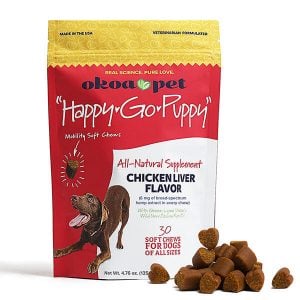What Are Some of the Causes of Joint Pain in Dogs?
Dogs as young as one year old can experience joint pain and arthritis. Unfortunately, joint pain is one of the most common ailments in dogs of all ages.
Recognizing when your dog is in pain is essential. It allows veterinarians to identify the cause of the pain. Furthermore, understanding the causes of joint pain will ensure your dog gets the right treatment to live a happy and healthy life.
This guide will discuss the causes, symptoms, and treatments of joint pain in dogs. Keep reading to learn more.
Causes of Joint Pain for Dogs
There are several reasons why your dog may be having joint pain. Joint pain causes include developmental and degenerative problems.
Developmental problems are hereditary. Elbow and hip dysplasia are two of the most common developmental problems.
Degenerative problems happen over time. As dogs get older, they will experience more health problems. A normal degenerative problem in dogs is arthritis.
Arthritis in dogs, osteoarthritis, sometimes starts because of wear and tear on the joints and ligaments. Causes of arthritis can also be linked to a prior developmental issue, bone fracture, or rupture of the cranial cruciate ligament (CCL) in the knee.
Obesity
Obesity is a serious problem with dogs. Because of their size, it is easier for dogs to become overweight. As a result, obesity will shorten a dog’s life and make it more susceptible to disease.
However, being overweight or obese will also put more pressure on the dog’s joints, causing pain. So making sure your dog is the correct weight is vital to its health. It will also help to ease joint pain if it starts to arise for any other reason.
Less Common Causes of Joint Pain
In some cases, dogs can develop rheumatoid arthritis. Rheumatoid arthritis is an autoimmune disease. The body destroys its own proteins in the synovial fluid located in the joints.
The loss of fluid leads to inflammation and the lessening of cartilage. Therefore, it is important to treat rheumatoid arthritis early to ease the pain the dog experiences.
Additionally, dogs can develop leaky gut syndrome. Leaky gut syndrome is when toxins cause damage to the gut. Toxins can come from food, the air, or water. When the gut becomes damaged, toxins enter the bloodstream.
When the immune system fights the toxins, it causes inflammation, especially in the joints, because they are numerous in the body. If leaky gut syndrome isn’t treated, it can lead to prolonged internal organ failure.
Symptoms of Joint Pain
You must be able to spot the symptoms of joint pain so your dog can get the care it needs. Common symptoms include stiffness, difficulty getting up or lying down, limping, and reduced interest in activities.
Imagine how you would move your body if your joints were achy and in pain. It would take you longer to do normal activities, you would tire faster, and you wouldn’t want to overexert yourself.
You can look for similar symptoms in your dog. For example, if your dog doesn’t want to climb the stairs, run or jump, there is cause for concern.
Finally, be on the lookout for joint swelling and behavioral changes. Dogs often lick or chew painful joints. Additionally, they may become irritable or aggressive when they are in pain.
Treatments for Joint Pain
Fortunately, access to joint pain treatment is widely available. There are many different options to choose from. But, starting treatment as soon as possible is best for your dog.
First, you want to consult with your veterinarian to see what the best course of action is. The veterinarian will perform a physical exam and take x-rays to see how severe the problem is. They may also test the joint fluid.
After the examination, the veterinarian will discuss the causes of joint pain with you. Then, you can review the treatment options.
Medicine and Supplements
It is best to eliminate toxins from your dog’s environment to reduce inflammation. You can use natural supplements like chondroitin, Dasuqui, and glucosamine to help with joint pain. Omega-3 fatty acids and CBD-infused treats may also help.
It would be best to consider changing your dog’s diet to make it more nutritious and incorporate these supplements. If necessary, your veterinarian can prescribe medication for your dog to ease the symptoms. They can give medicated injections to help with joint pain too.
Home Support and Alternative Approaches
Provide your dog will well-padding bedding at home. Sleeping areas should always be warm and dry. You can use padded steps, non-skid flooring, and ramps to aid with getting around the house.
At home, you can massage your dog to stimulate blood flow. A specialist can show you how to massage your dog properly using warm compresses. You can also try cold laser treatments to stimulate blood flow.
In addition, some rehabilitation specialists can offer your dog physical therapy or hydrotherapy. These approaches can help keep up your dog’s strength and flexibility. Muscle mass and movement protect the joints.
Some other alternatives you can look into are acupuncture, chiropractic therapy, and stem cell therapy.
Surgery
In serious cases, surgery can repair or replace joints and tissue. Veterinarians can also do an arthroscopic cleaning of the joints. This is where they wash out or clean the inside of the joints.
A Happy and Healthy Dog
Now that you know dog pain symptoms, you can identify when your dog needs to see a veterinarian. Moreover, you know the causes of joint pain, so you know what will be best for your dog when choosing a treatment option. Early intervention is the key to managing your dog’s pain and ensuring a happy life.
If you’re interested in learning more about alternatives that may ease the discomfort associated with joint pain in dogs, contact us at Okoa Pet today.








